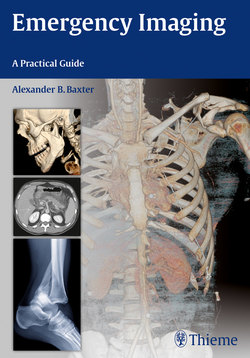Читать книгу Emergency Imaging - Alexander B. Baxter - Страница 85
На сайте Литреса книга снята с продажи.
Оглавление71
2Brain
cephalus, sulcal eacement, and (rarely) hyperdense subarachnoid or intraventric-ular pus. Meningeal enhancement can be seen if contrast is administered.
FLAIR sequences are particularly sensi-tive to abnormal CSF and can be useful in the early detection of elevated CSF protein seen in meningitis. Oxygen therapy and subarachnoid hemorrhage can have a simi-lar appearance.
The primary role of CT in suspected men-ingitis is not to establish the diagnosis but toexclude subarachnoid or intraparenchymalhemorrhage and ensure the safety of diag-nostic lumbar puncture, which would becontraindicated by significant supratento-rial edema or intracerebral mass (Fig. 2.30).
◆Bacterial Meningitis
Acute bacterial meningitis is most com-monly due to Streptococcus pneumoniae, Neisseria meningitidis,or group B strep-tococcus. Patients present with headache, sti neck, and variable encephalopathy as a result of meningeal inflammation and adjacent cerebral edema. Potential compli-cations include cerebral ischemia, sepsis, and hydrocephalus due to impaired CSF resorption. Viral meningitis, tuberculosis, cryptococcus, and coccidioidomycosis are nonbacterial infections that can mimic bacterial meningitis. Noninfectious con-siderations include neurosarcoidosis, men-ingeal carcinomatosis, and CNS lymphoma.
CT findings are often normal and, when present, subtle. They include mild hydro-
Fig. 2.30a–da,b Bacterial meningitis in an adult. Noncontrast CT. Mild ventricular enlargement; hyperdense debris lls the occipital horns of the lateral ventricles.
c,d Bacterial meningitis in an infant. (c) NCCT. Severe hydrocephalus with transependymal CSF resorption and intraventricular debris. (d) T1-weighted MRI with gadolinium. Diuse leptomeningeal enhancement. Hydrocephalus.
